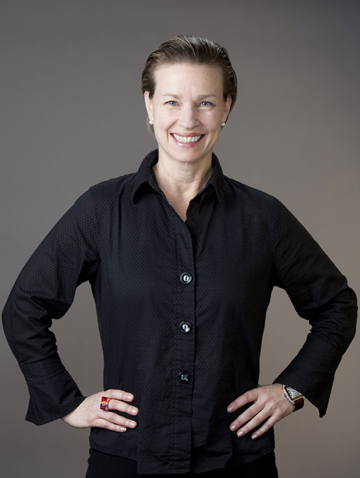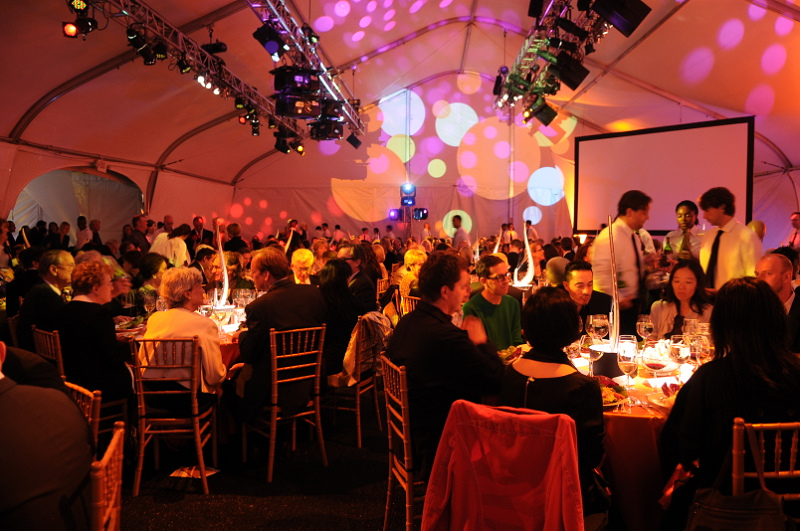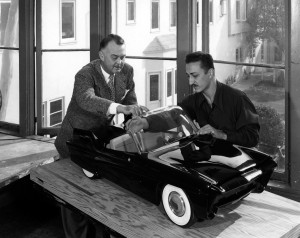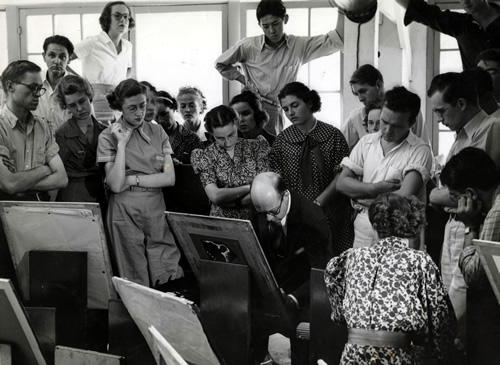A Q&A with Professor Gloria Kondrup, Archetype Press Director

Gloria Kondrup
How did Art Center’s Archetype Press come about?
Archetype Press was founded in 1989 with more than 2,500 drawers of rare American and European foundry type, wood type and ornaments from the collection of Los Angeles typographer and printer Vernon Simpson.
The support from Art Center’s then-president David Brown, the financial backing of five patrons, and the hard work of the founding Archetype Press Director Vance Studley was crucial to its creation. Before coming to its current home at South Campus, Archetype was located on Mills Place in Pasadena. This was before the retail revival of Old Pasadena—most of Colorado Boulevard was boarded up, and finding parking was never a concern.
What role have you played in relation to Archetype?
I discovered Archetype Press and letterpress printing in 1992 as a graduate student at Art Center. Although my design background was in branding and packaging, I found the letterpress experience authentic and tactile. After graduation, I purchased my own presses and established a design studio that straddled both 15th and 21st century technologies.
 In 2003, I was given the opportunity to become director of Archetype. In one sense, I view my responsibility as stewardship for the preservation of language and of a cultural artifact while enhancing students’ ability to understand the relationship of language and imagery.
In 2003, I was given the opportunity to become director of Archetype. In one sense, I view my responsibility as stewardship for the preservation of language and of a cultural artifact while enhancing students’ ability to understand the relationship of language and imagery.
People are often surprised that Art Center teaches students to use this “outdated technology.” What is your response to that?
Archetype continues the tradition of an older—but not outdated—technology. While letterpress is steeped in tradition, Archetype is not nostalgic.
As an experimental typographic workshop, students don’t just study the prototypes of digital letterforms, but are exposed to a sensual graphic experience that is both felt and seen as type is inked and pressed into a piece of paper. They are getting ink underneath their fingernails, not merely replacing ink cartridges in color printers. They are being challenged to expand beyond the margins of the computer screen, engaging in a design discourse that can question the uses of newer technologies.
Without question, digital technologies are the preferred way for the efficient exchange and dissemination of information. But digital technology has also allowed letterpress printing to change and explore new ways of combining image and text.
Continue reading →


 Tomorrow, October 16, Art Center will honor four prominent alumni—industrial designer
Tomorrow, October 16, Art Center will honor four prominent alumni—industrial designer 






 When the school was founded in 1930, designers were exploring primary shapes, so it is no surprise that a simple filled-in circle was chosen to augment Art Center’s printed materials. Advertising alum Robert Brown claims that the Dot was his idea, while Don Kubly, the College’s president from 1969 to 1985, noted that the school’s founder, Tink Adams, chose the Dot because it was an easy way to add a splash of color to the school’s publications.
When the school was founded in 1930, designers were exploring primary shapes, so it is no surprise that a simple filled-in circle was chosen to augment Art Center’s printed materials. Advertising alum Robert Brown claims that the Dot was his idea, while Don Kubly, the College’s president from 1969 to 1985, noted that the school’s founder, Tink Adams, chose the Dot because it was an easy way to add a splash of color to the school’s publications.



 It was in 1930 that the Art Center School opened its doors at
It was in 1930 that the Art Center School opened its doors at